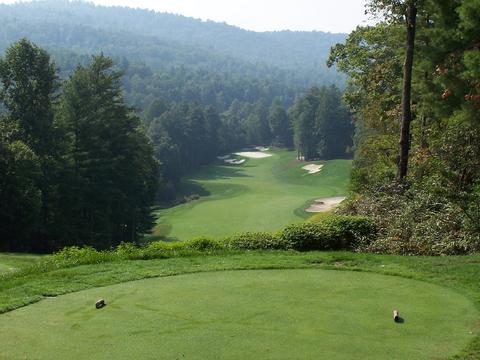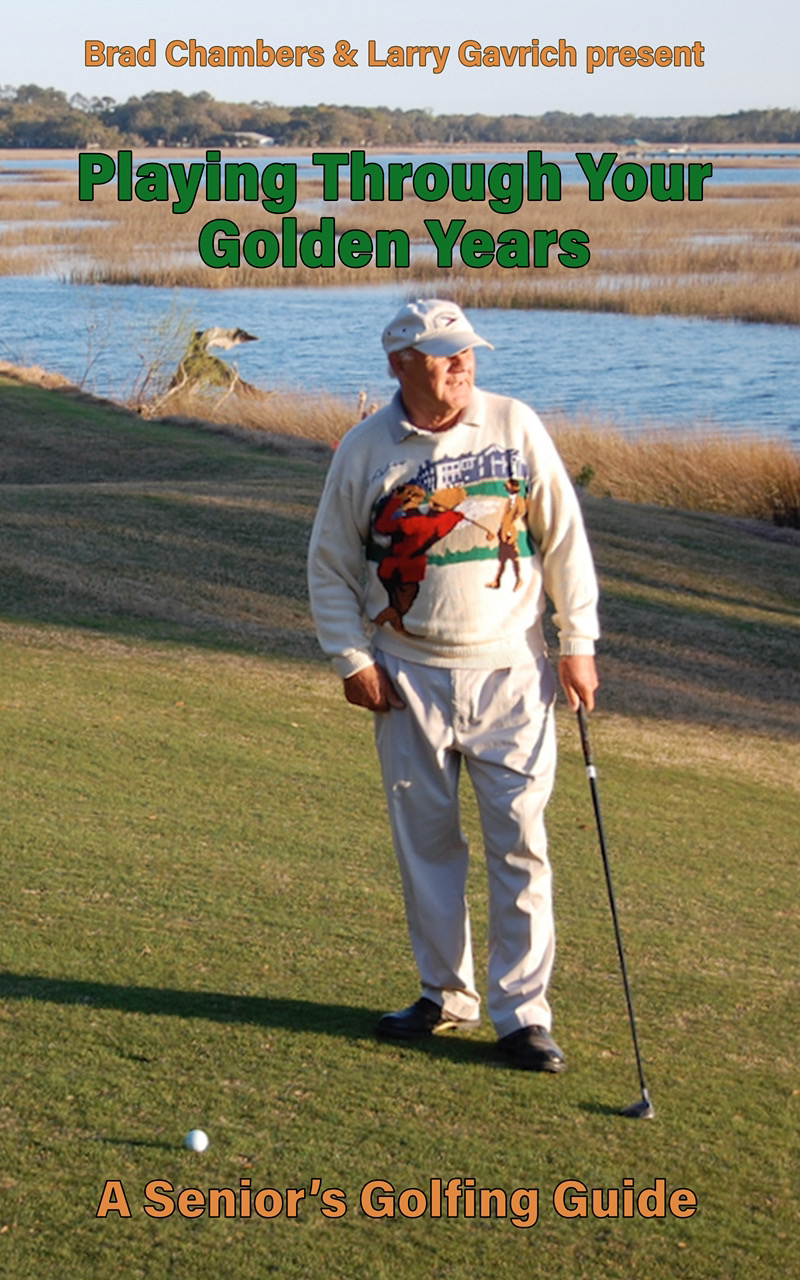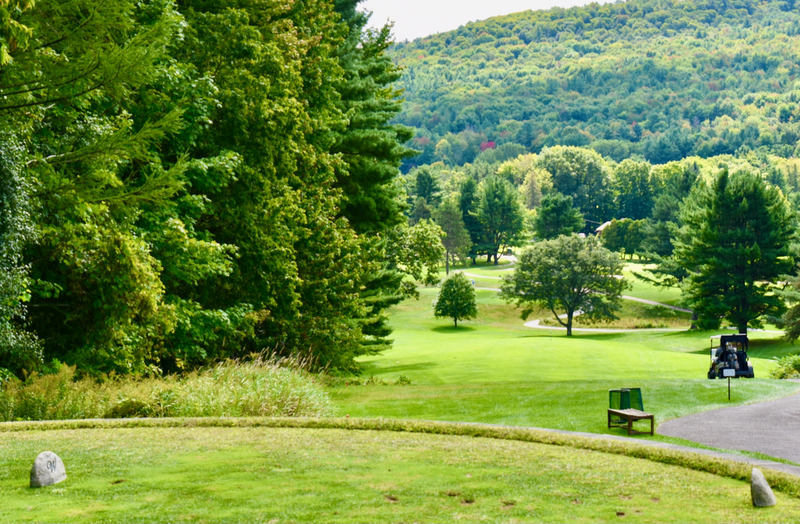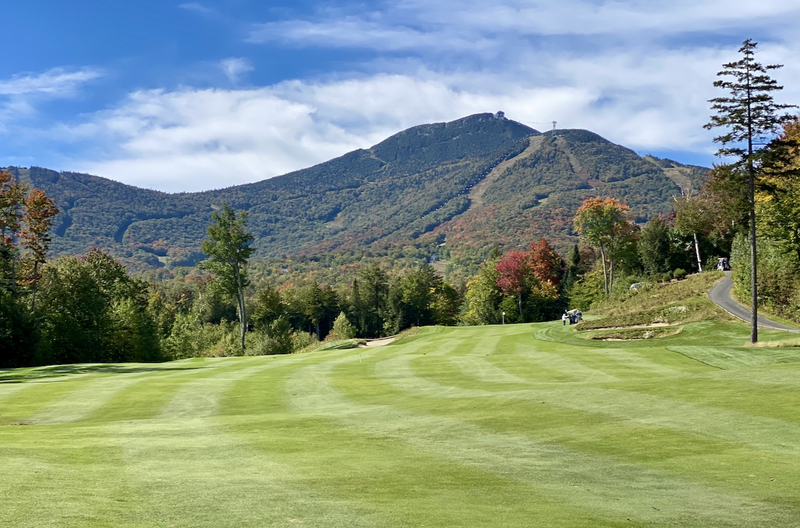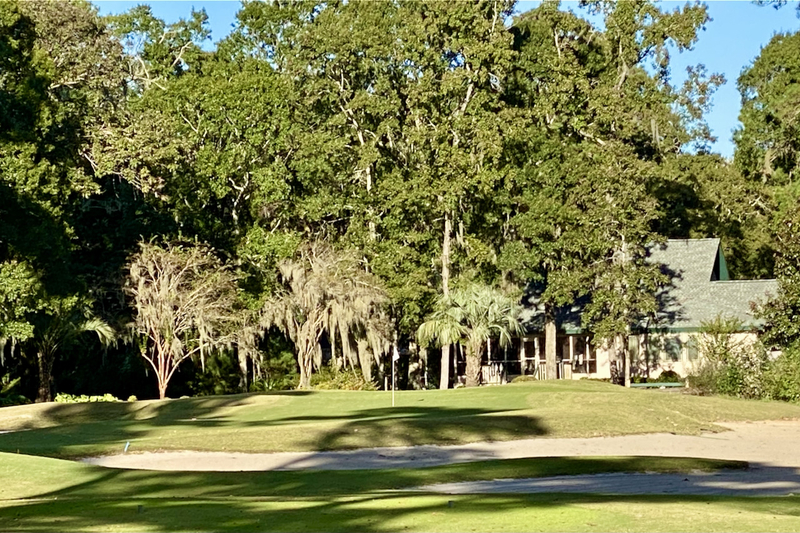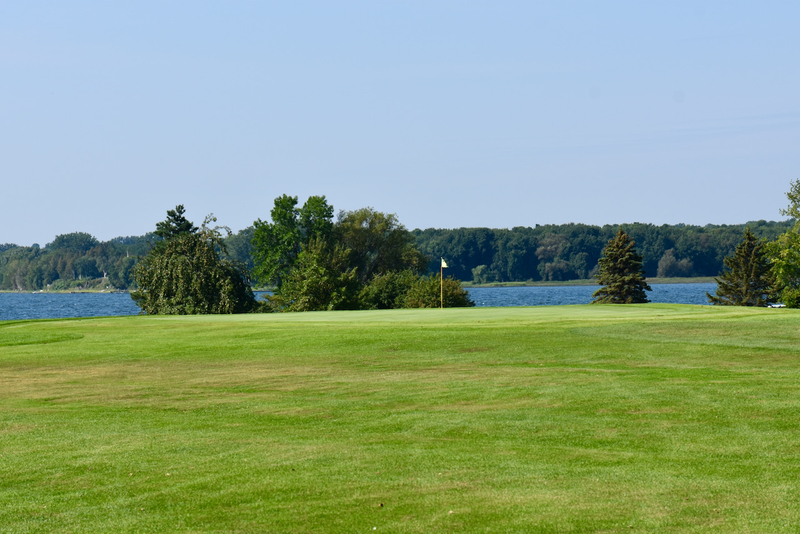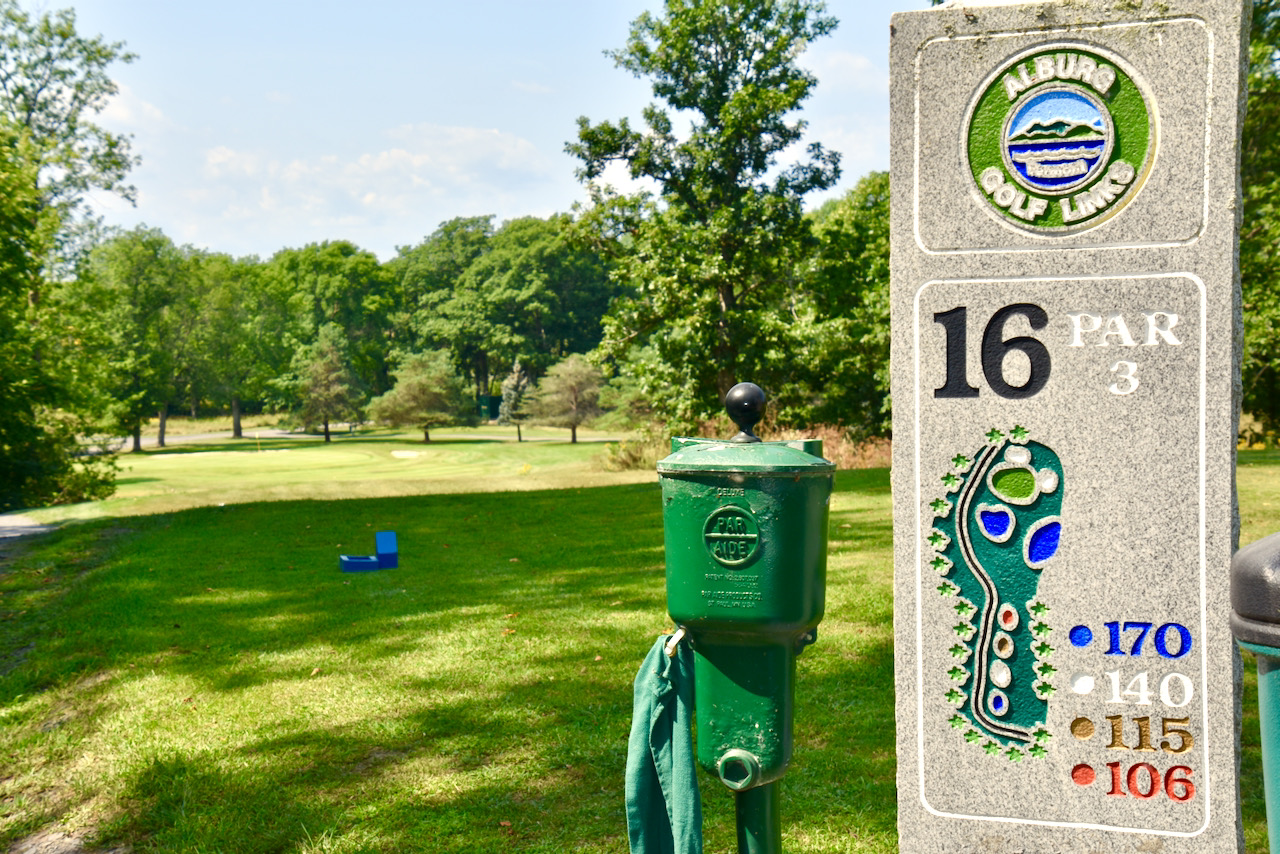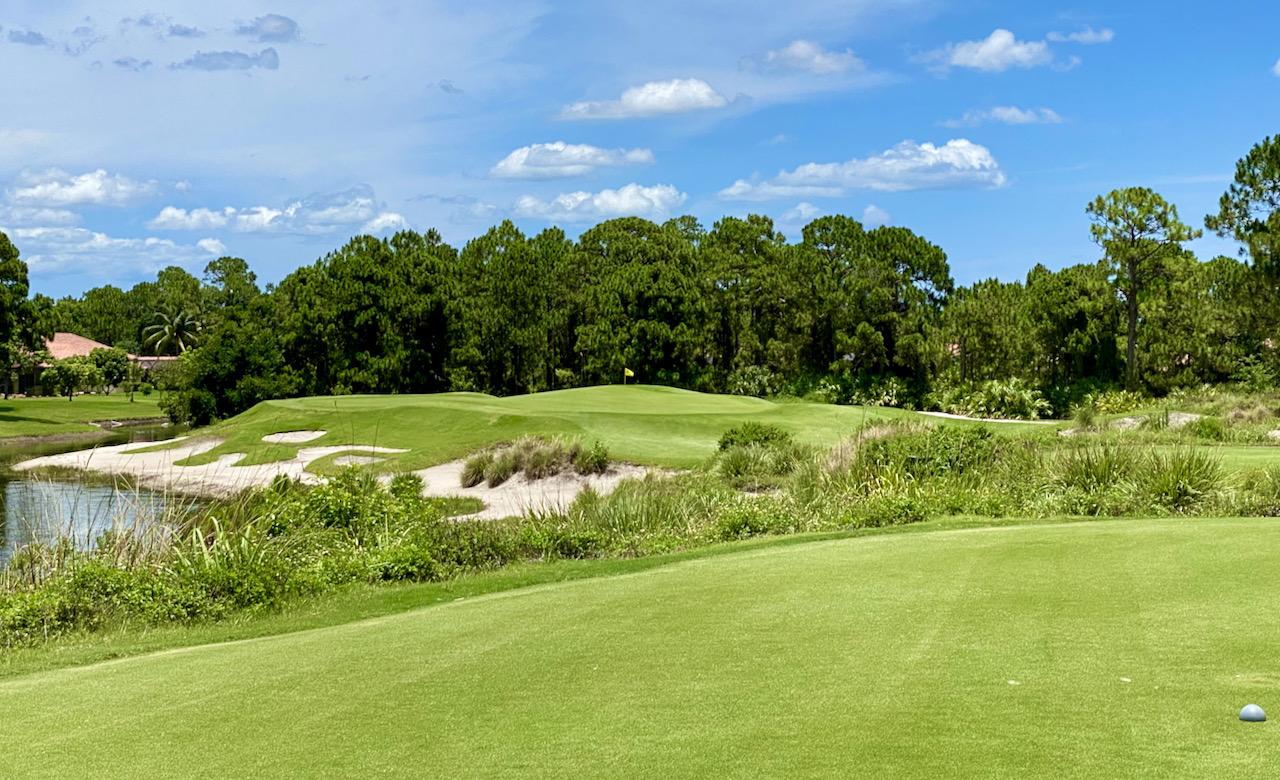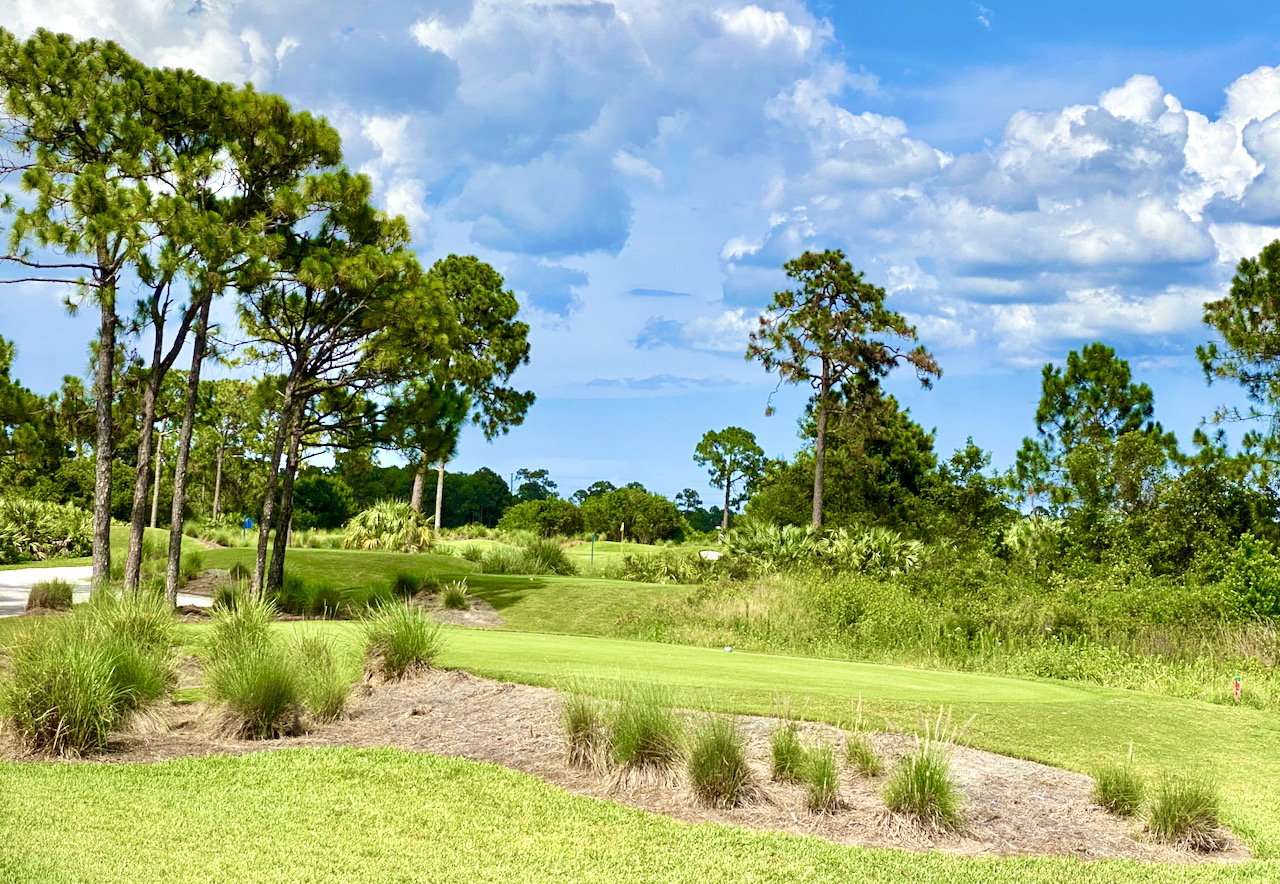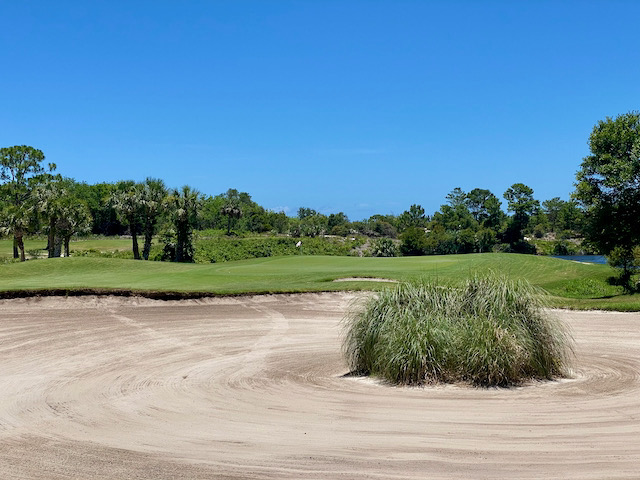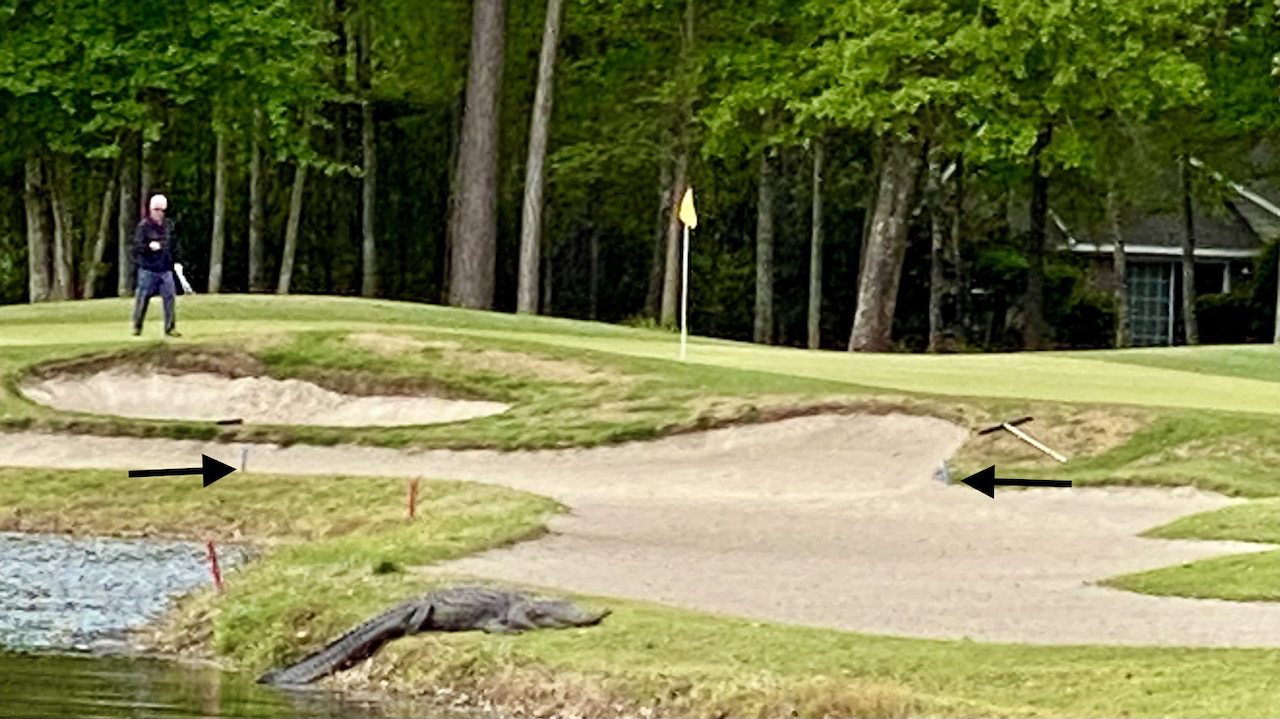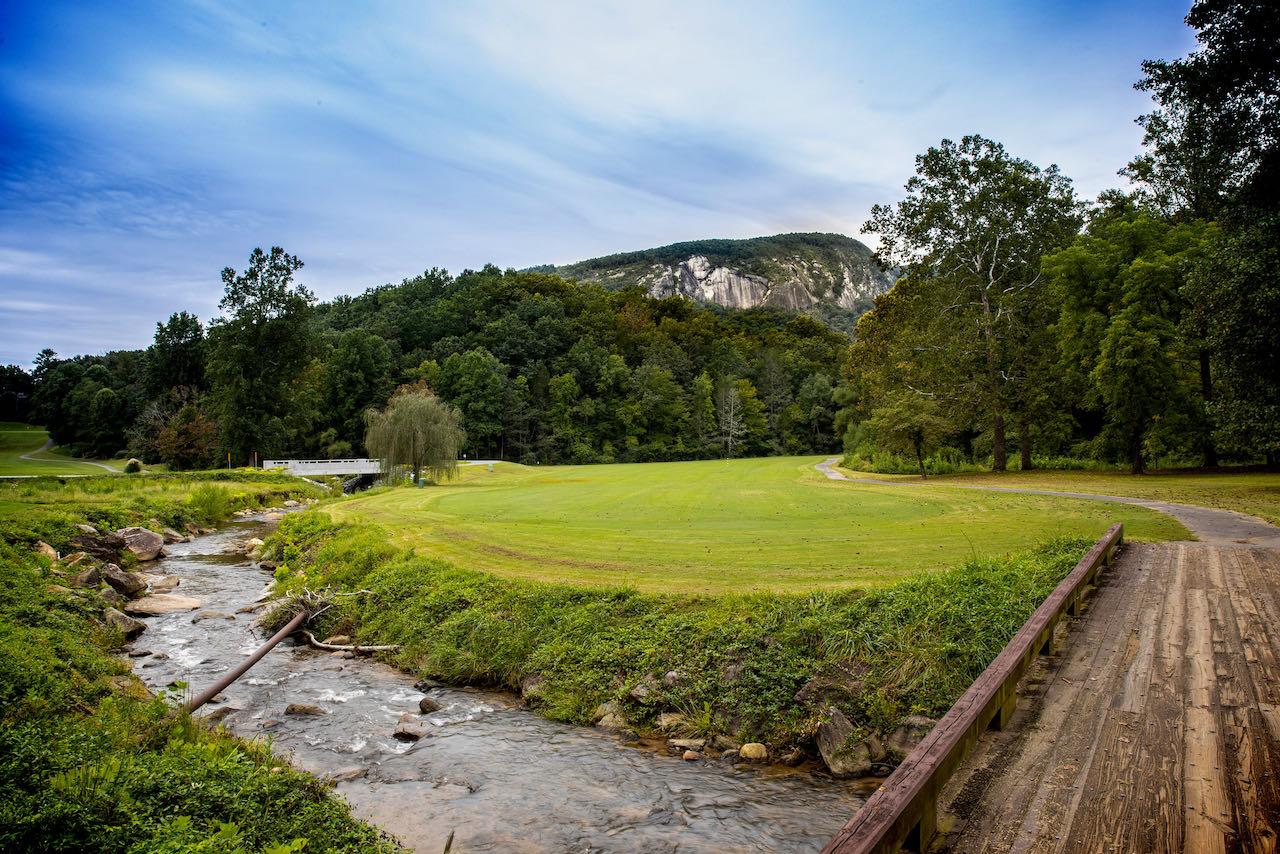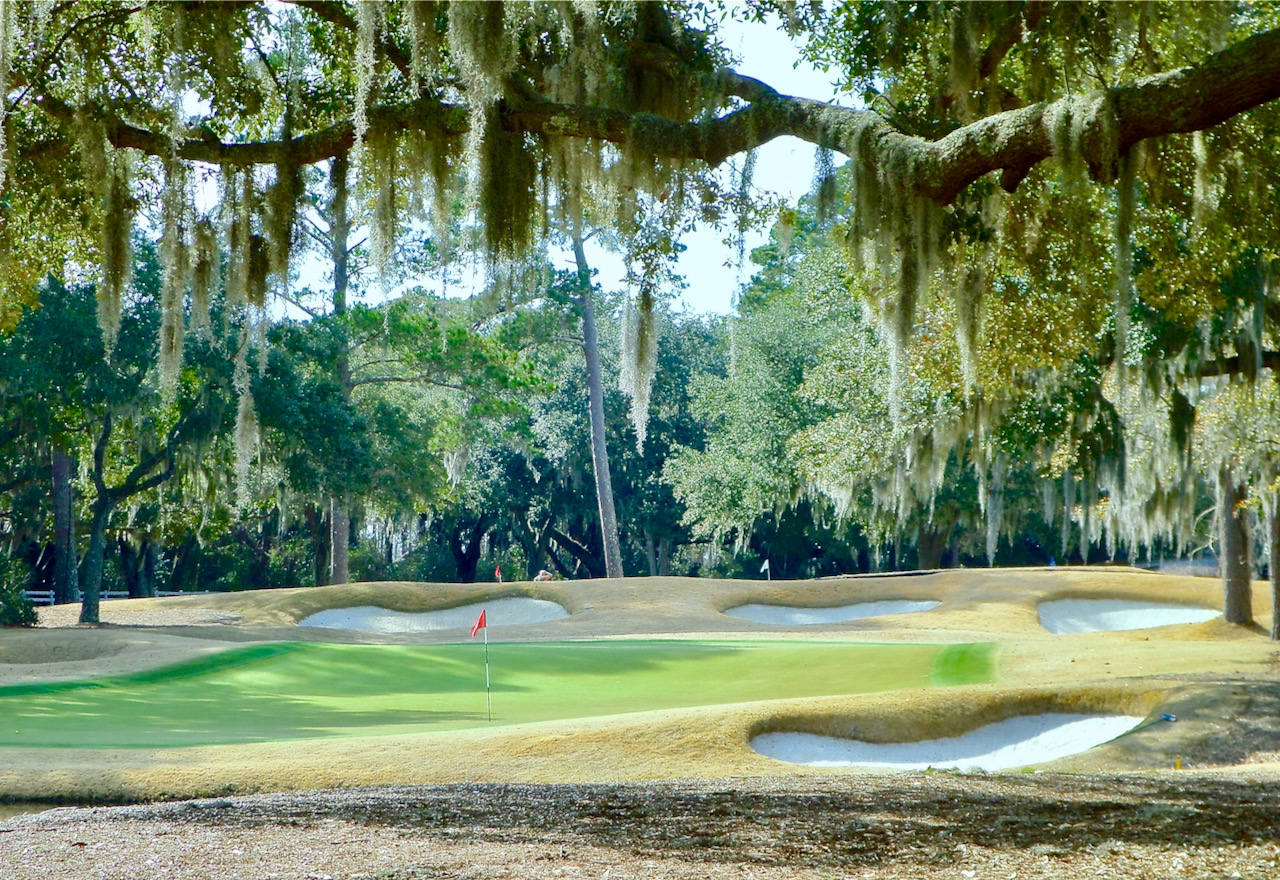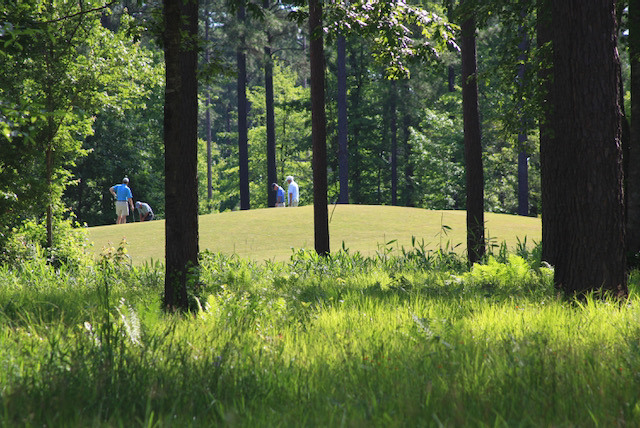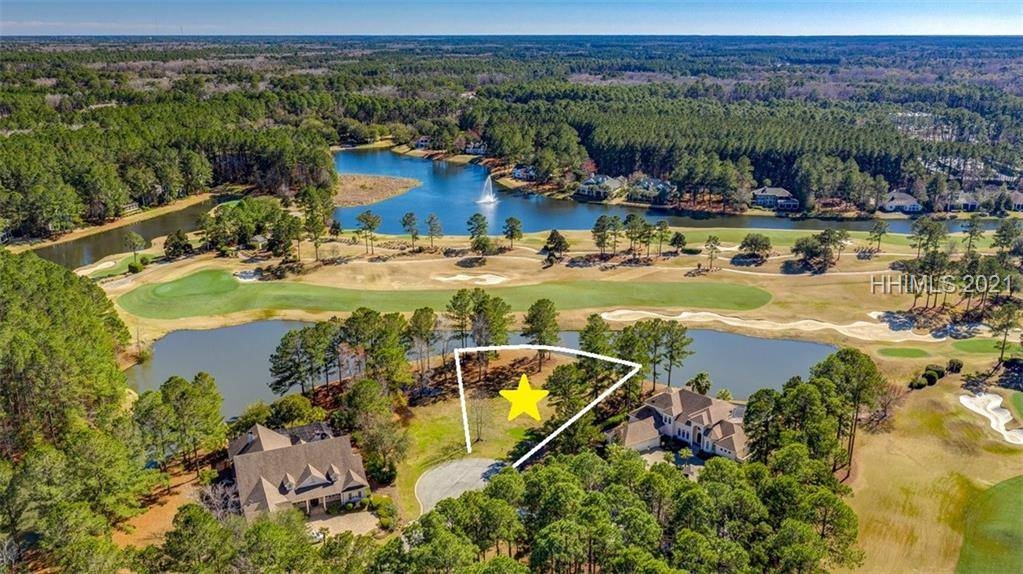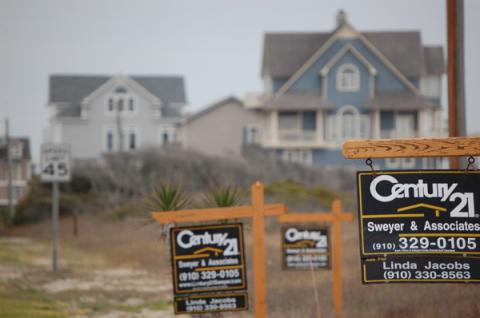
Whether a result of over speculation or beach erosion, it seems as if every other house is for sale on North Topsail Island.
Life is imitating the U.S. housing market on the coast of North Carolina, and not just directly. I spent last weekend in a hotel at the foot of the bridge leading to North Topsail Island, NC, next door to the North Shore Country Club community (look for review in the next few days). In the local real estate brochures, I was fascinated by the low prices for ocean view properties on the island, half the pricetag for such properties elsewhere along the coast of the Carolinas. With a little follow-on research, I soon understood why.
Sand dunes at the northernmost tip of the island have been torn asunder by the tides from the ocean and inlet, exposing the homes there to the Atlantic and imminent collapse. Despite all efforts to hold back the ocean, it would not take even a perfect storm to deliver a coup de grace to some of the houses on the island's north end.
As is often the case in such crises, personal versus community interests have pitted citizen against citizen. The oceanfront homeowners think the town and county should help save the beach, and therefore their homes, by paying for expensive beach modifications. Local real estate agents will tell you that North Topsail has made it through hundreds of years, and this recent crisis will pass with the modest shifting of the sands. They don't embellish with historical reminders that, for most of the millenia, there were no homes on the island. When I drove along the beach's main road, I saw for-sale signs on virtually every other house; the earlier run-up in prices and collapse of the housing market doesn't explain all that activity.
pitted citizen against citizen. The oceanfront homeowners think the town and county should help save the beach, and therefore their homes, by paying for expensive beach modifications. Local real estate agents will tell you that North Topsail has made it through hundreds of years, and this recent crisis will pass with the modest shifting of the sands. They don't embellish with historical reminders that, for most of the millenia, there were no homes on the island. When I drove along the beach's main road, I saw for-sale signs on virtually every other house; the earlier run-up in prices and collapse of the housing market doesn't explain all that activity.
I had to maneuver my way around a bulldozer that had just finished pushing sand around when I went to take some photos on the north end of the island last Saturday. A large, dune-defacing dredging pipe ran hundreds of yards up the beach from where the inlet and ocean meet. More than a decade ago in a New York Times article, Duke University's Dr. Orrin Pilkey called North Topsail "the most dangerous island community in North Carolina and one of the most dangerous along the East Coast. The dunes are all artificial and extremely fragile, and, all in all, it's an island community that should not have been developed if common sense were to prevail.'' Dr. Pilkey has repeated his warning at conferences and in articles ever since.
For a budget-strapped town and county, some argue, saving a relative few homes will have consequences down the line for the many other citizens who also need their government's support. The local papers are filled with letters on both sides of the issue. The current economy is just exacerbating the argument. One
North Topsail's dilemma seems very much like a metaphor for the U.S. housing market. In fact, Peter Schiff, author of "Crash Proof: How to Profit From the Coming Economic Collapse," could have been thinking about North Topsail as metaphor in a Los Angeles Times article on Sunday titled "Let the Housing Chips Fall Where They May." He argued that housing prices are "like a beach house supported by eight pillars: lax lending standards, low down payments, ‘teaser' interest rates, widespread real estate speculation, pliant appraisers, willing lenders, easy refinancing and a market for mortgage-backed securities."
Schiff added that if you knock out just half the pillars, the house comes crashing down but "We've [Bernanke and his band of system re-engineers, my term for ‘We'] knocked out all of them. Yet everyone hopes that this allegorical house can defy gravity and that bubble-era prices can be sustained in a post-bubble world."
Whether a speculative investor in a condo in Vegas or Miami or the owner of a primary home on North Topsail, one ignores the laws of gravity at their expense and may not get the help from local government for their miscalculations. For the speculators, they chose to ignore the easy-to-understand warnings that prices do not go up in a straight line forever. On North Topsail, the risks from the tides have been known for decades but, even after a run up in the early part of this decade, relatively low prices were just too tempting to pass up.
Judging by the numbers of for-sale signs on the beach, the tide has gone out for now.
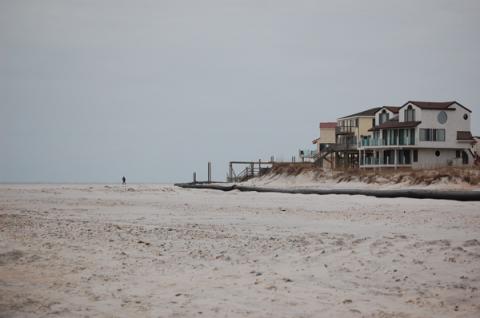
At the northern tip of North Topsail Island, homes are exposed to the ocean and an inlet from the Intracoastal Waterway, as well as an ugly dredging pipe.
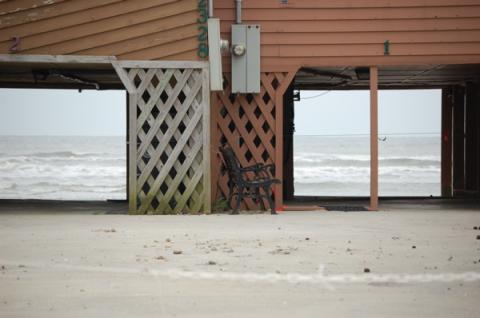
Homes on the island are built essentially on pillars to permit surging waters from hurricanes to flow through to the marsh a few blocks to the west.




